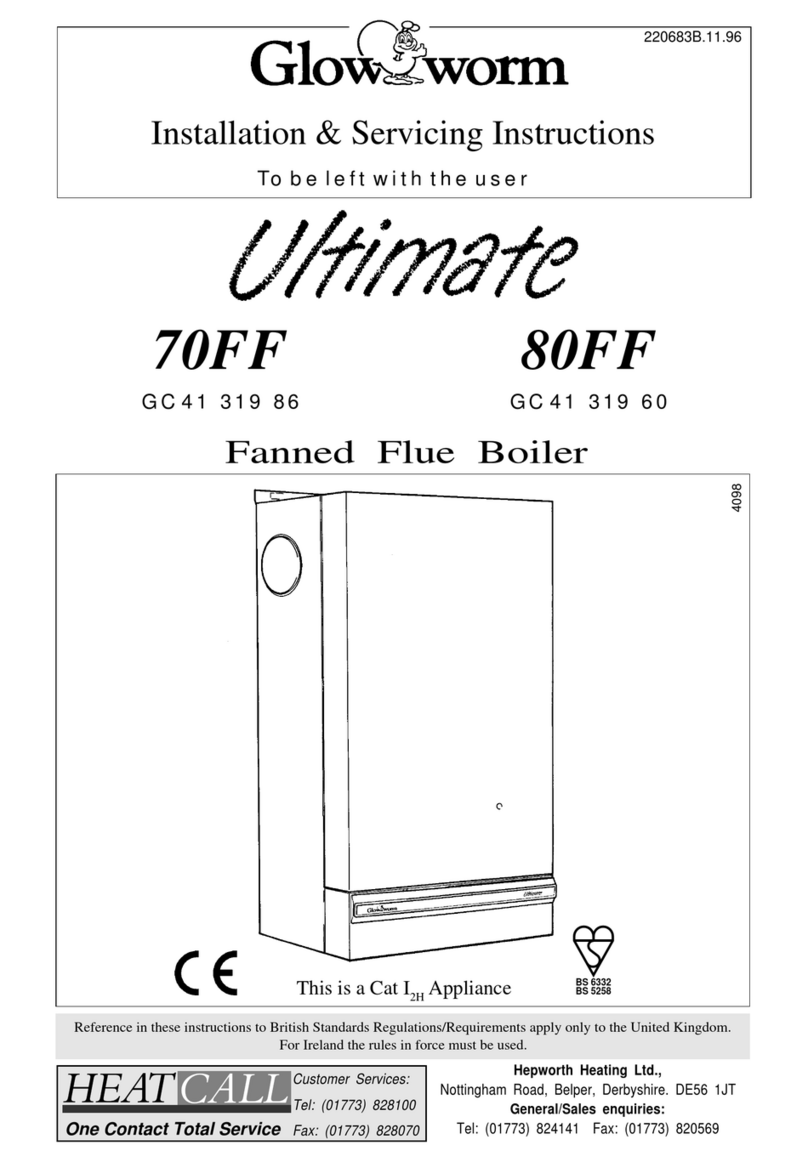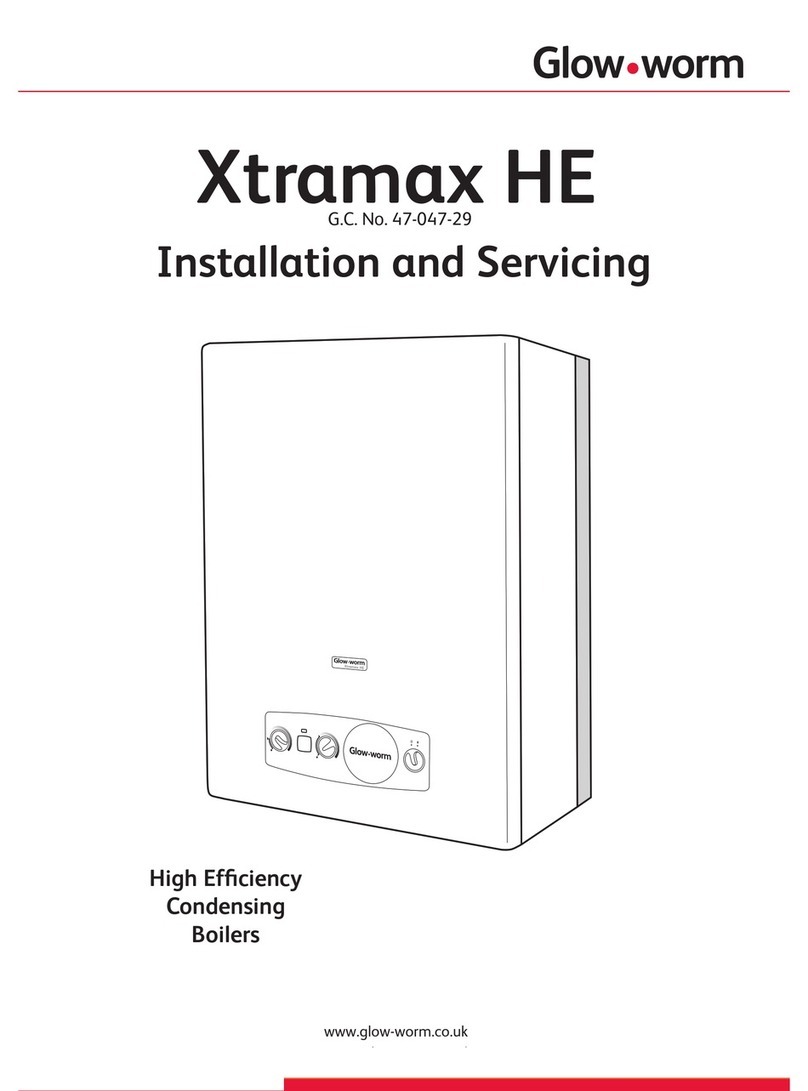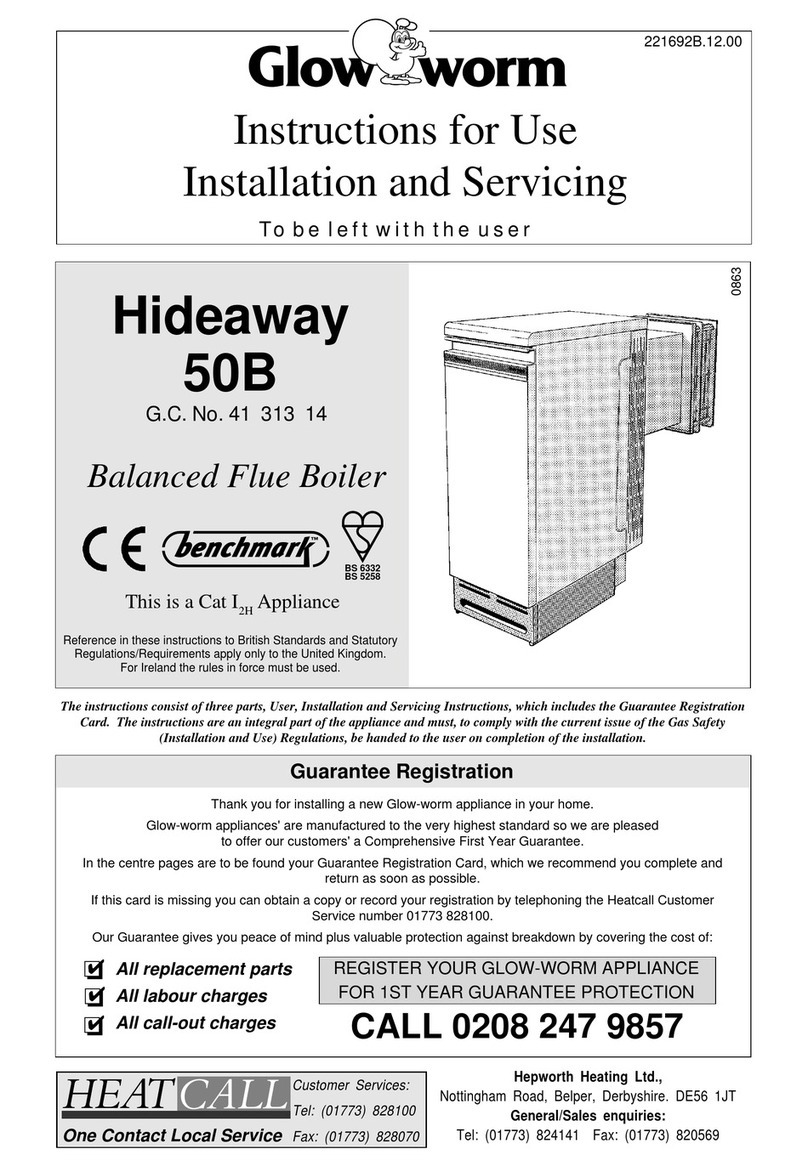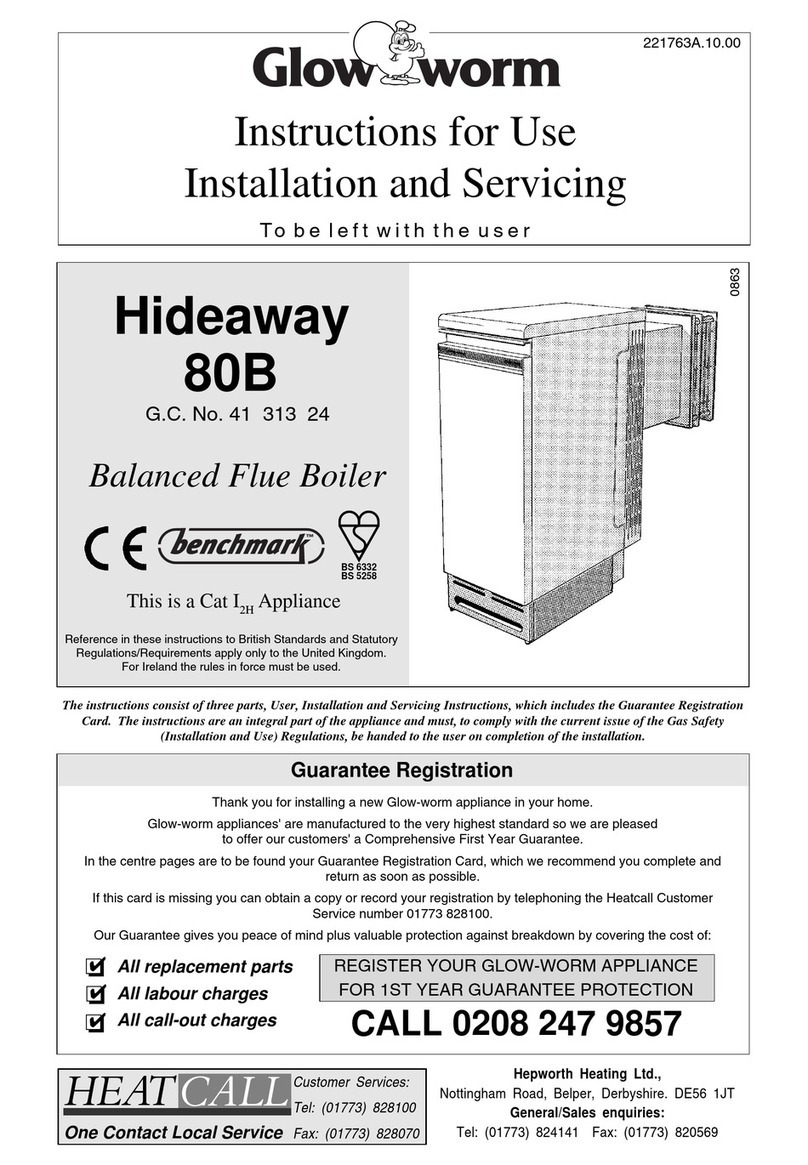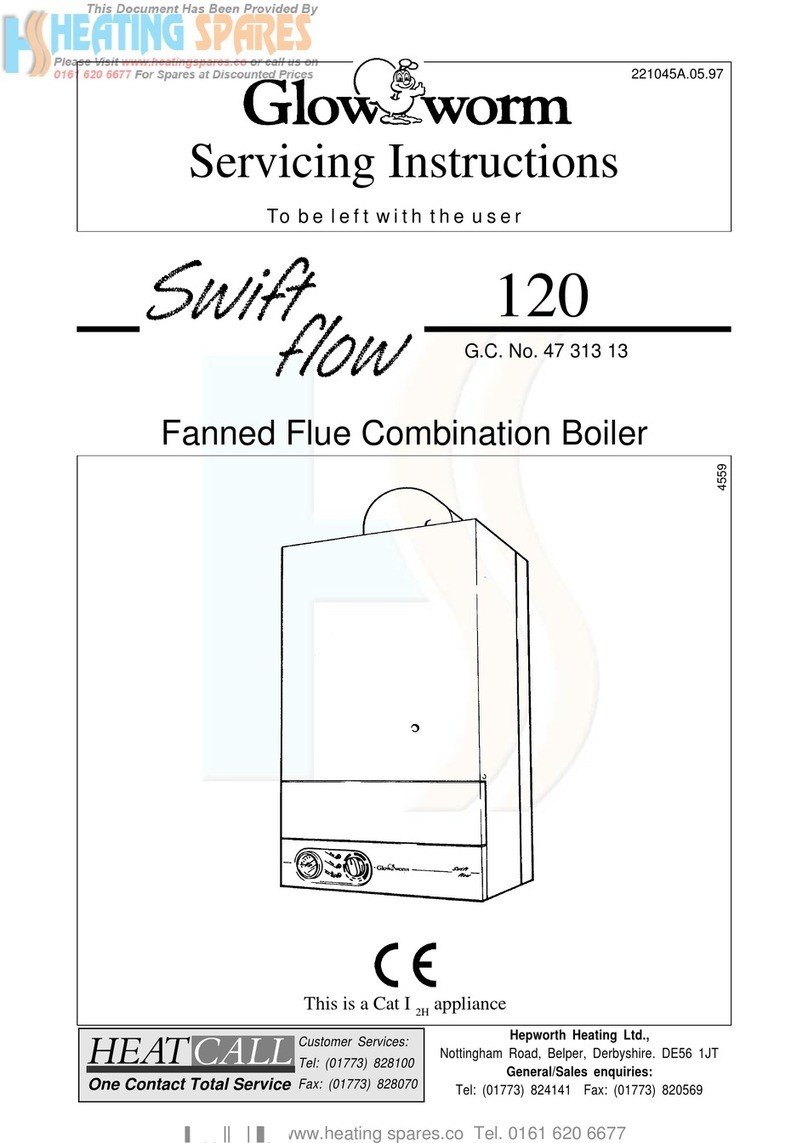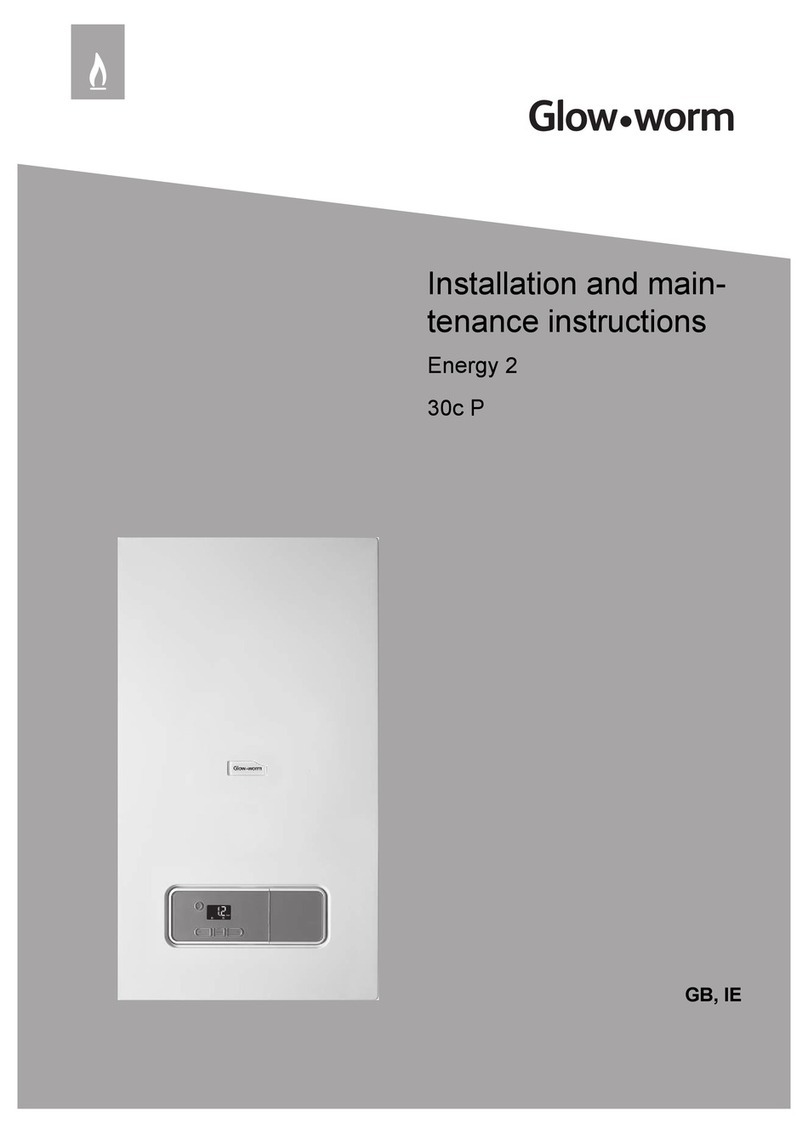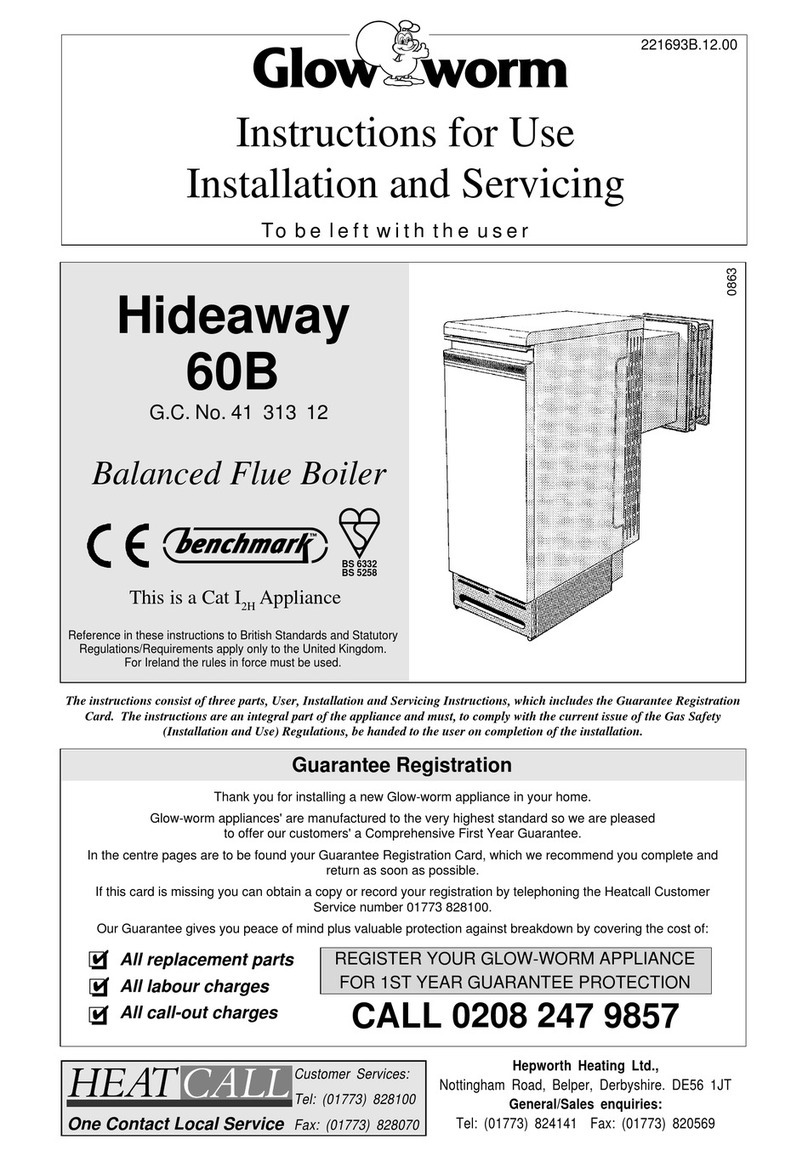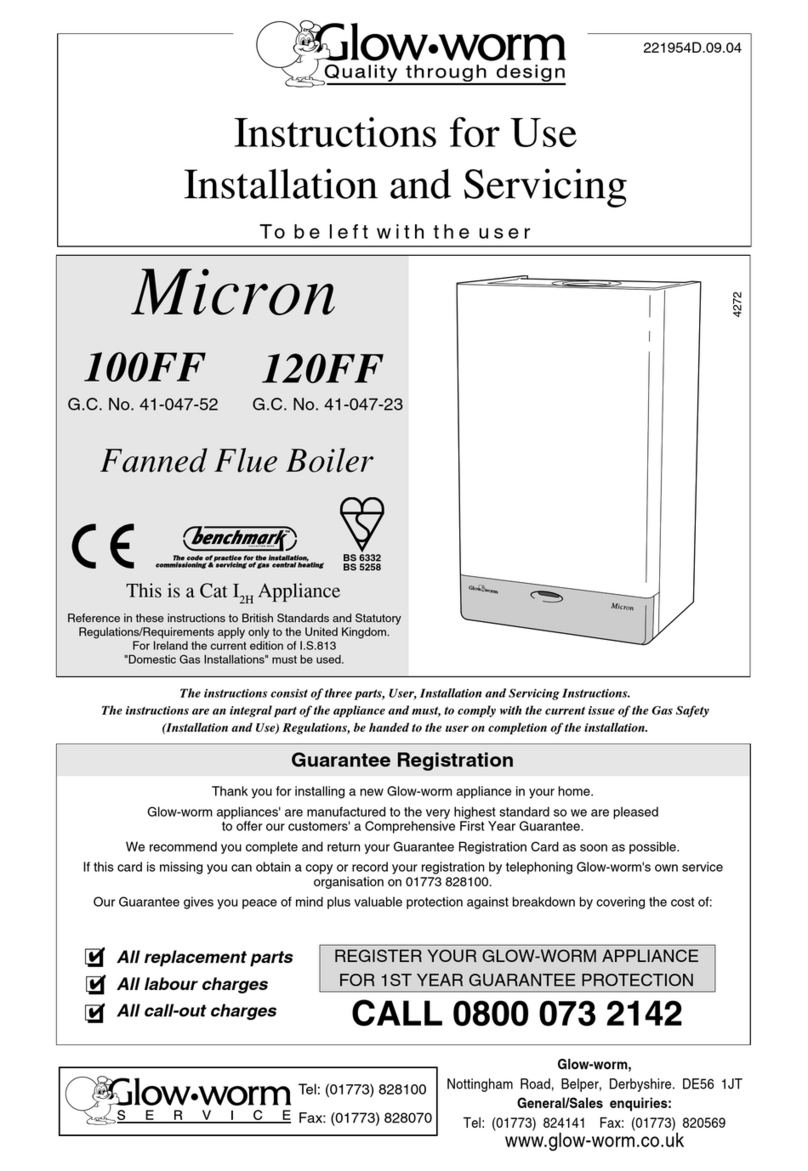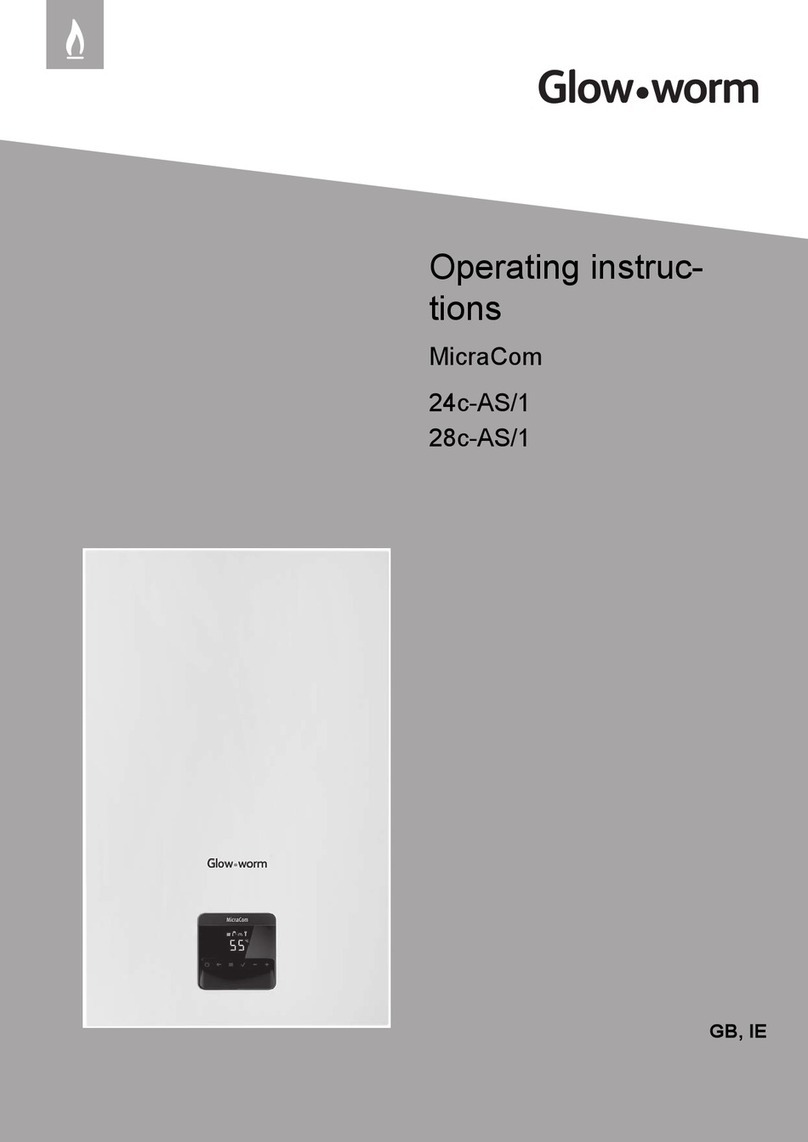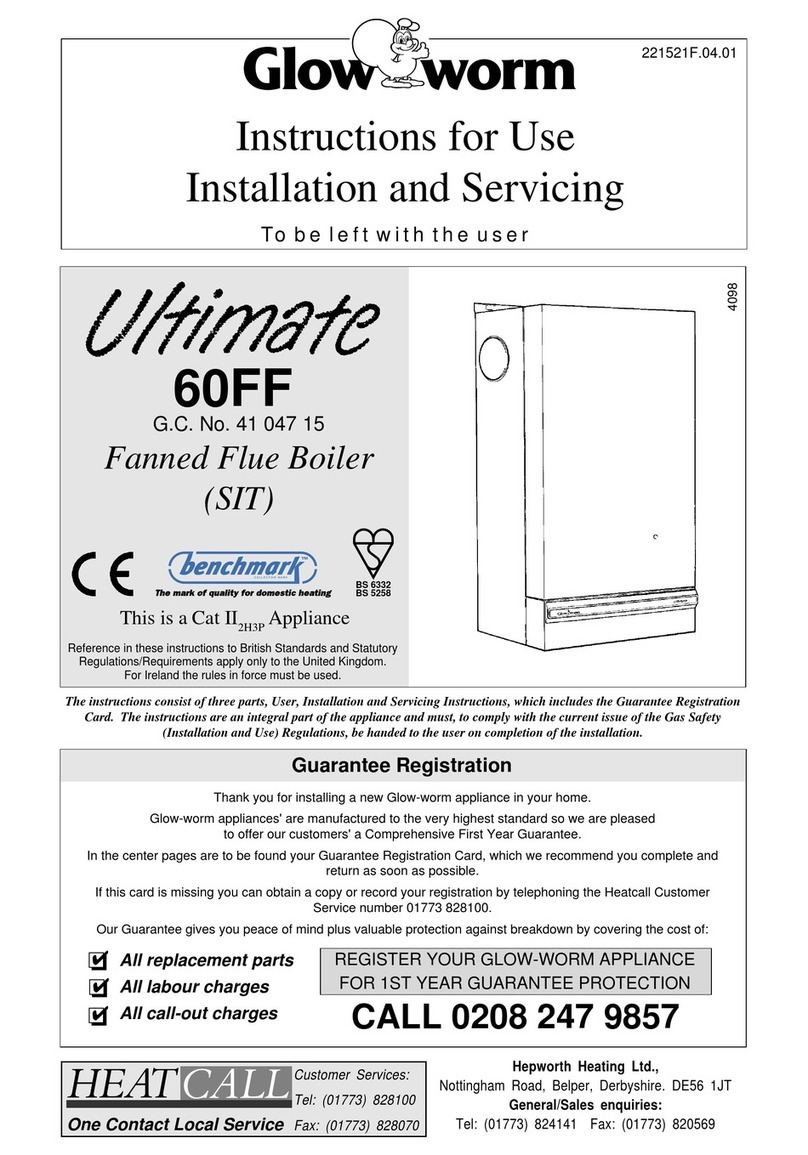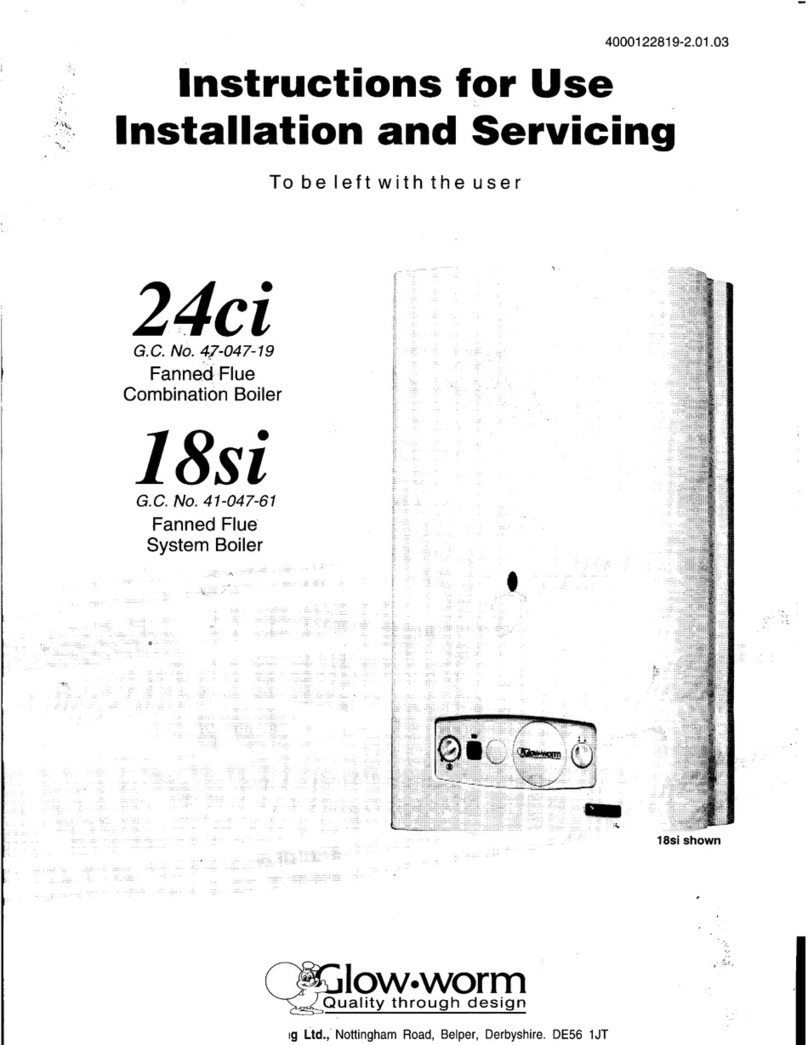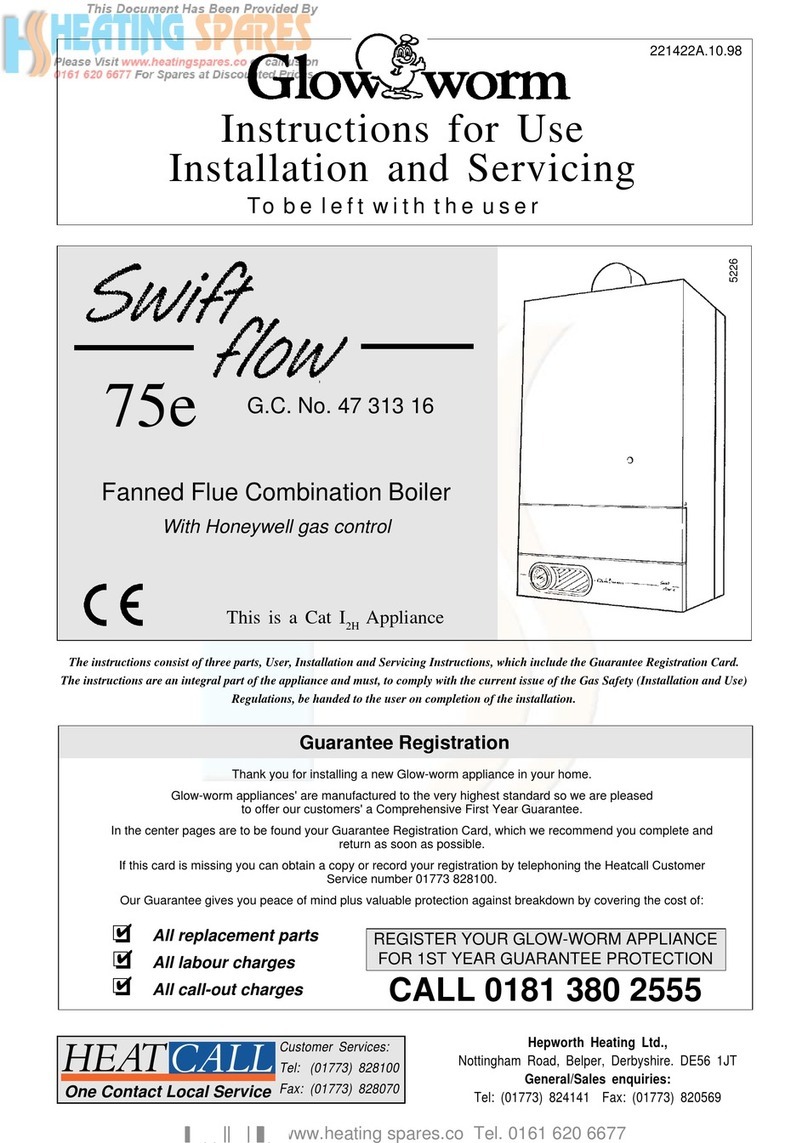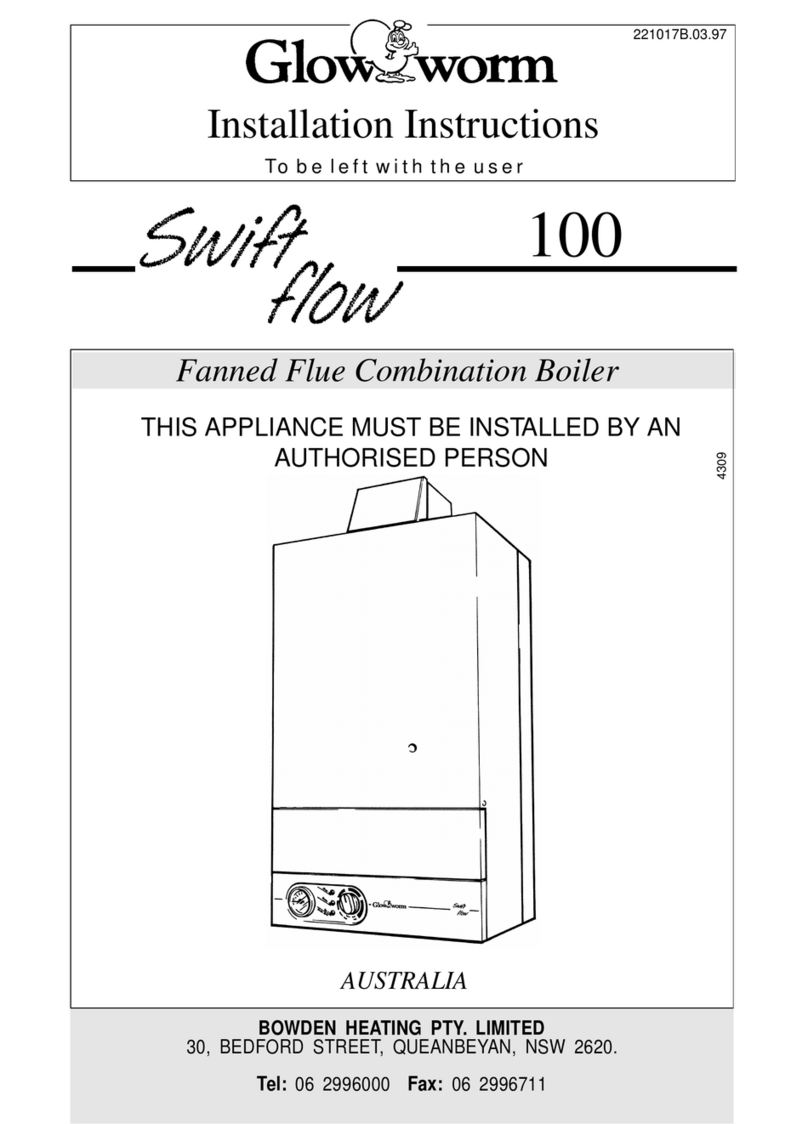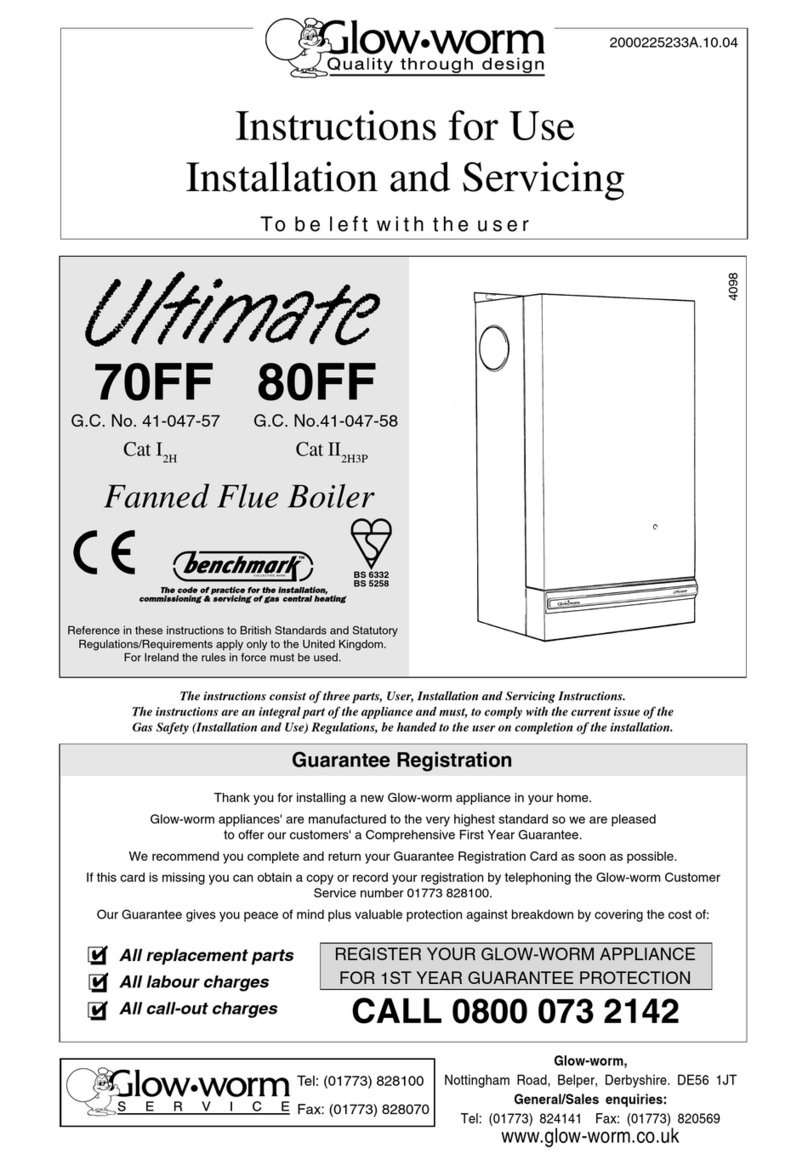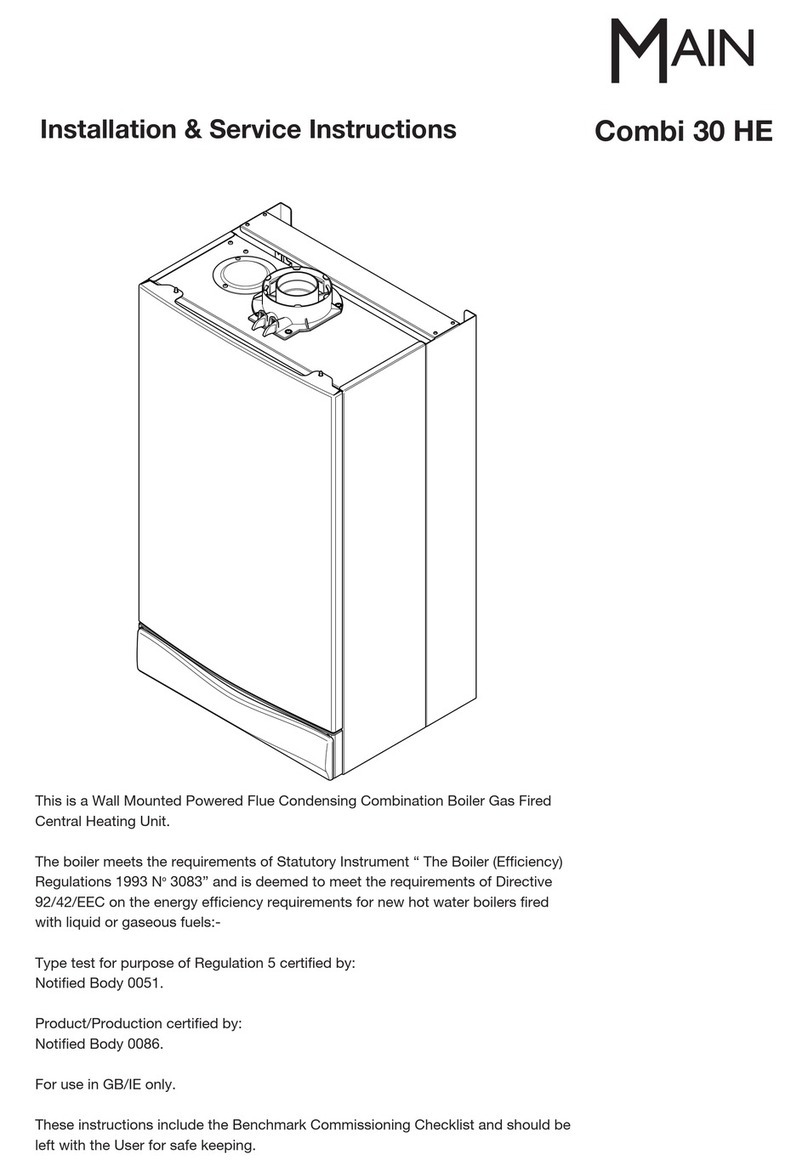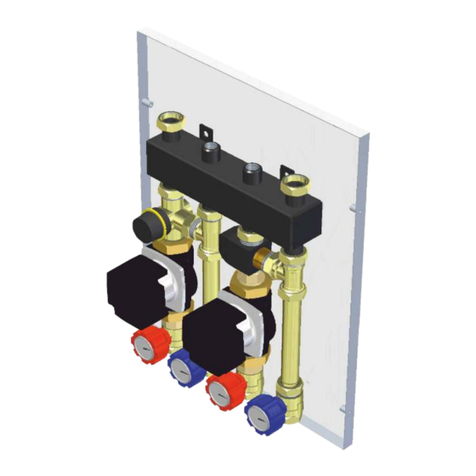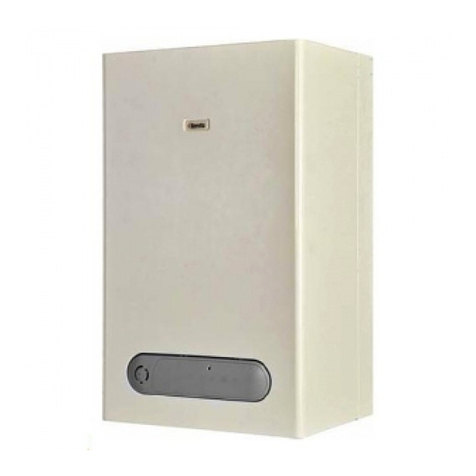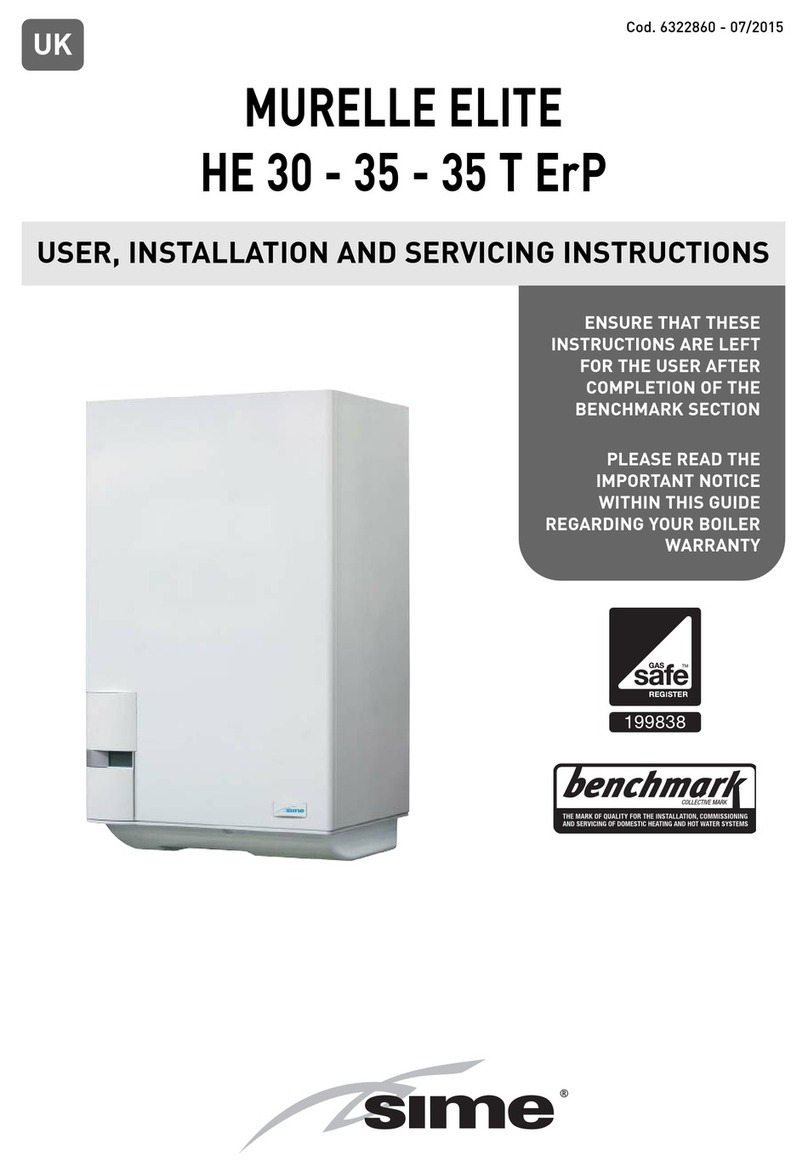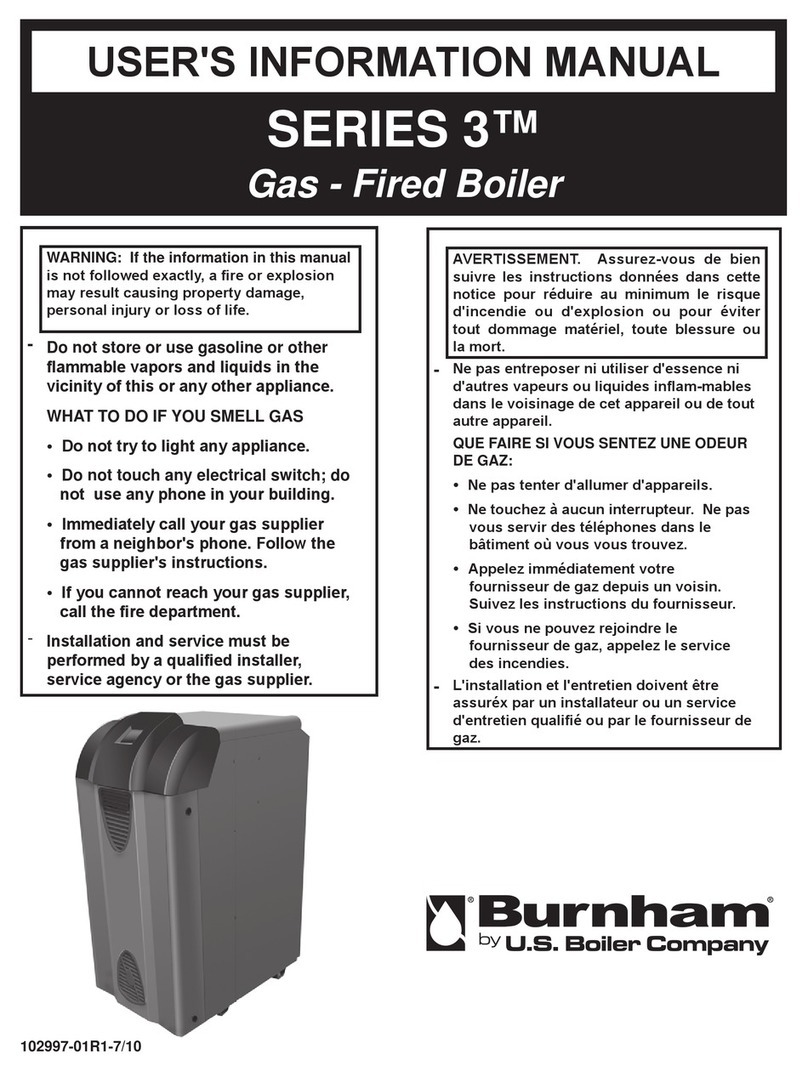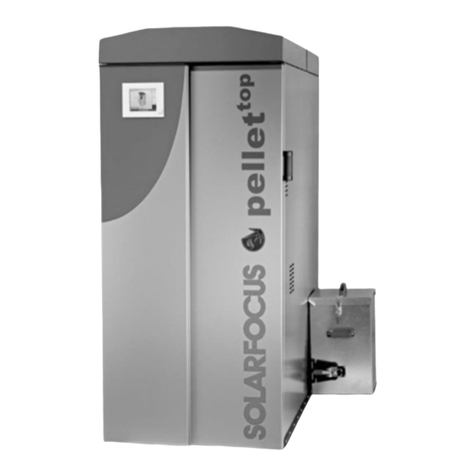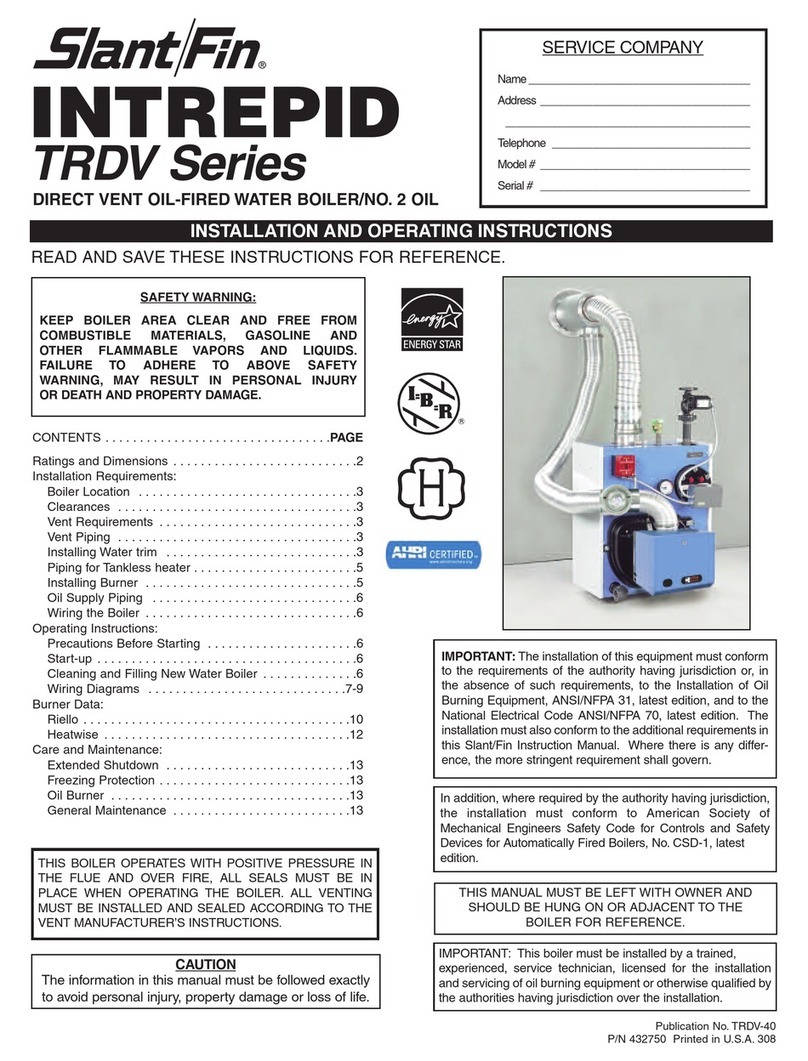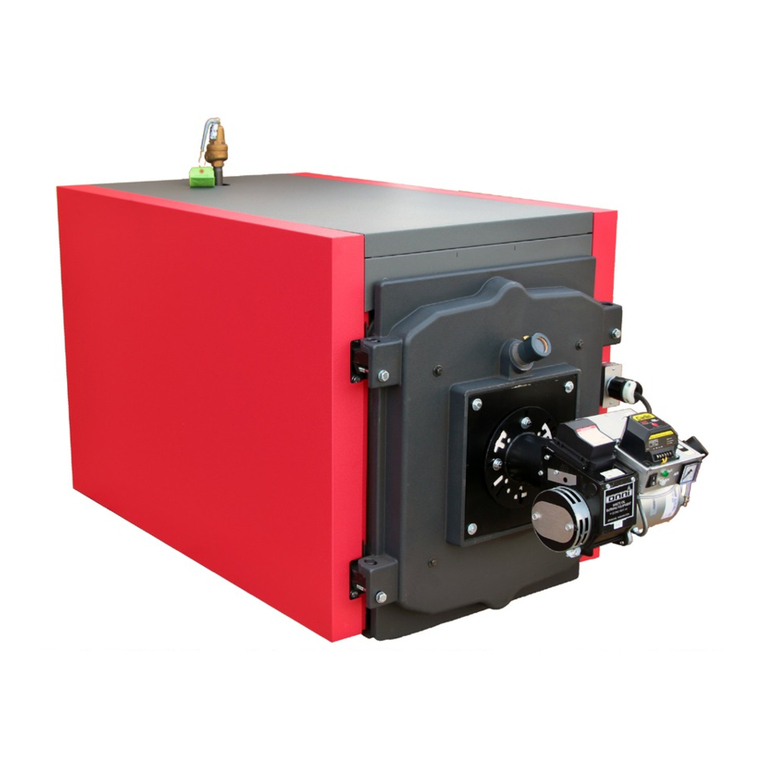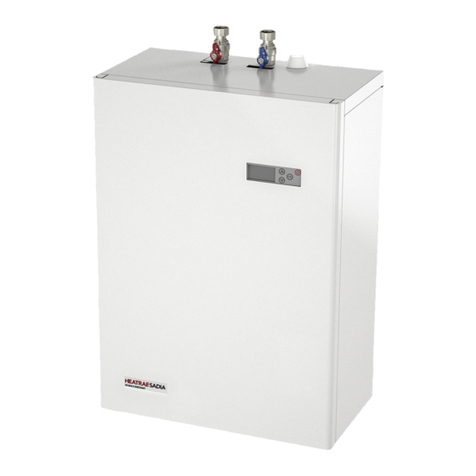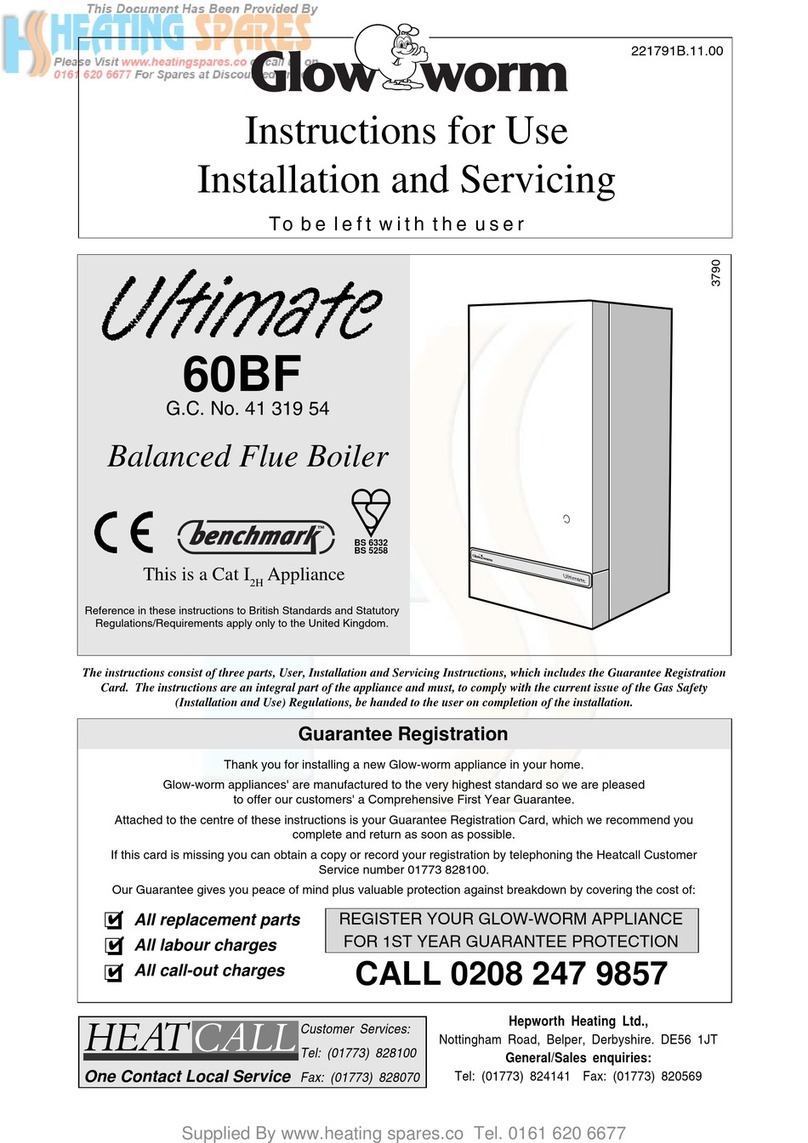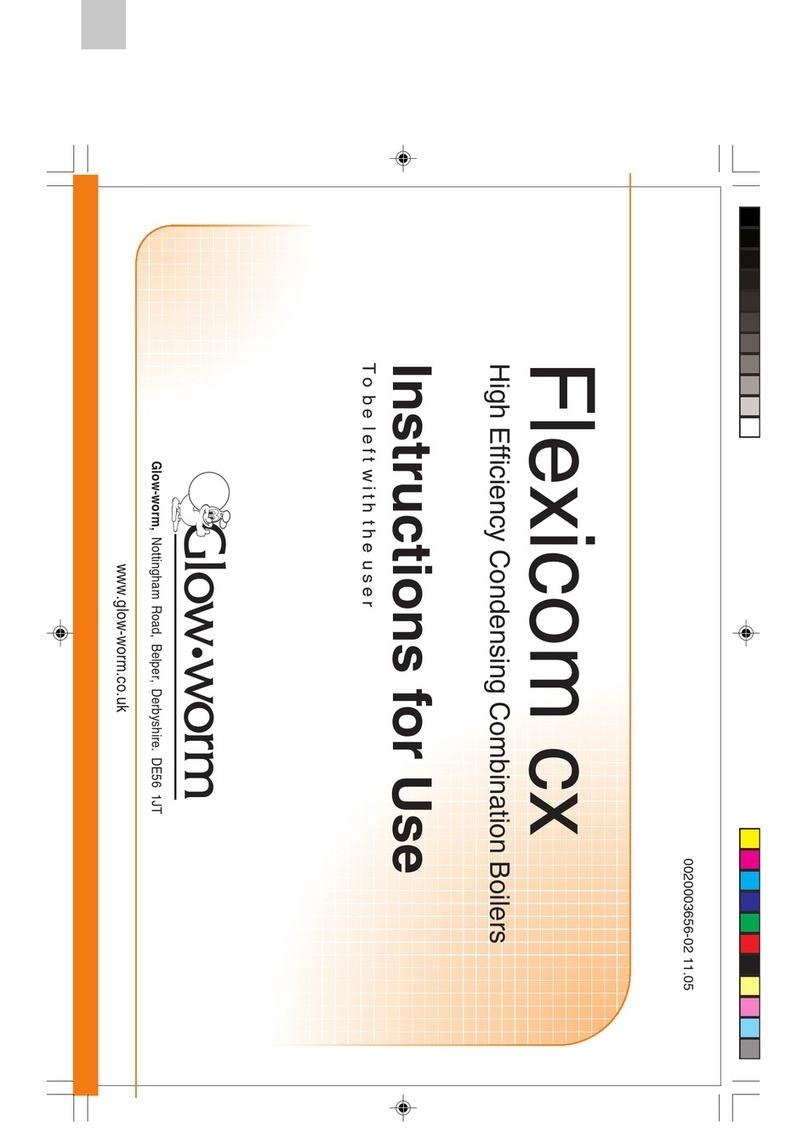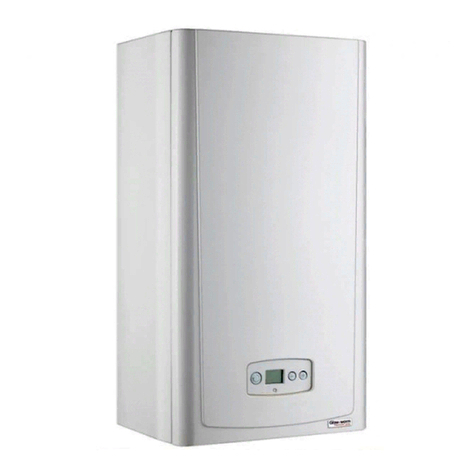
Supplied By www.heating spares.co Tel. 0161 620 6677
13 221473B
4 Heating System
4.1 General Notes
The boiler is for use in sealed water systems only.
4.2 Safety Valve
Thesafetyvalve isan integralpart oftheboiler andit cannotbe
adjusted.
4.3 Pressure Gauge
A pressure gauge is incorporated into the boiler to indicate the
system pressure.
4.4 Pump
The circulation pump is integral with the boiler.
The remaining circulating pressure head available from the
boiler is shown in diagram 4.1, Grundfos or 4.1A Glow-worm
Wilo.
4.5 Expansion Vessel
The boiler has an integral expansion vessel with a capacity of
8Litres (1.76gallons), with a charge pressure of 0.75bar.
The maximum heating system water content using the fitted
expansionvesselrangesfrom119Litreswithacoldfillpressure
of0.7bar, to 98Litres with a cold fill pressureof 1.05bar. If, due
to a high static head, the cold fill pressure is higher, then the
expansion vessel pre-fill pressure must be increased, and the
maximum system volume decreased.
4.6 Flow Rate
A valve must be incorporated in the main flow or return of the
system, valve “A” shown in the flow in diagram 4.2. This valve
must be lockable and positioned so that inadvertent closure or
unauthorisedinterferenceisnotpossible. Thedesigndifferential
can be between 11°C (20°F) and 17°C (30°F), dependent on
the system resistance and the available pump head.
Grundfos Pump
The pump adjuster should normally be left at maximum (3) but
in some cases it is permissible to adjust the pump to a lower
setting (2). See diagram 4.1.
Tousediagram4.1start withtherequiredheatingsystem load.
In the example shown the maximum boiler output has been
chosen, 17.6kW (60,000Btu/h).
Draw a horizontal line from the required system differential
temperatureaxistointersectthecurve. Intheexample11°C
(19.8°F) has been chosen, shown . At the point
of intersection draw a vertical line to cross the pump curve.
From this point draw a further horizontal line to determine the
availablepumphead. Intheexample1.9m(6ft3in)isavailable.
A greater pump head can be achieved by choosing a higher
systemdifferentialtemperature,uptoamaximumof4.0m(13ft)
at a system differential of 17°C (30.6°F). The system must be
designed such that the available pump head is not exceeded.
If the heating system load is less than 13.2kW (45,000Btu/h)
then it is permissible to adjust the pump setting to (2),
shown . This results in an available pump
head of 2.1m (7ft). This is the maximum that can be achieved
with the pump at this setting.
Glow-worm Wilo Pump
The pump adjuster should normally be left at maximum (2) but
in some cases it is permissible to adjust to a lower setting (1),
see diagram 4.1A.
To use diagram 4.1A start with the required heating system
load.
In the example shown the maximum boiler output has been
chosen, 17.6kW (60,000Btu/h).
Draw a horizontal line from the required system differential
temperatureaxistointersectthecurve. Intheexample11°C
(19.8°F) has been chosen, shown . At the point
of intersection draw a vertical line to cross the pump curve.
From this point draw a further horizontal line to determine the
available head. In the example 1.9m (6ft3in) is available. A
greater pump head can be achieved by choosing a higher
systemdifferentialtemperature,uptoamaximumof4.0m(13ft)
at a system differential of 17°C (30.6°F). The system must be
designed such that the available pump head is not exceeded.
If the heating system load is less than 13.2kW (45,000Btu/h)
then it is permissible to adjust the pump setting to (1),
shown . This results in an available pump
head of 4.2m (13ft9in). This is the maximum that can be
achieved with the pump at this setting.
4.7 Bypass
Itis ESSENTIALthat abypass of22mm odminimum isfitted to
all installations. The bypass must have a lockable valve, “B” in
diagram 4.2, incorporated in a position so that inadvertent
closure is not possible.
The bypass MUST be fitted before any system control. A
radiator bypass is NOT recommended.
4.8 Make Up
Provision should be made for replacing water lost from the
systemusingamakeupbottlemountedinapositionhigherthan
the top point of the system, connected through a non-return
valve to the return side of the heating circuit, see diagram 4.2.
Alternatively, provision for make up can be made by pre-
pressurisation of the circuit.
4.9 Filling Sealed Systems
Provision for filling the system at a low level must be made.
Three methodsof filling are shownin diagram 4.3. Theremust
be no permanent connection to the mains water supply, even
through a non return valve.
NOTE:Itisimportantthatfittingsusedforconnectiontopotable
water comply with the water undertakers requirements.
4.10 Corrosion Inhibitor
Ifaninhibitoristobeusedinthesystem,contactamanufacturer
so that they can recommend their most suitable product.
When fitting the boiler into an existing system, special care
should be taken to drain the entire system, including radiators,
thenthoroughly cleaning outbefore fitting the boiler whether or
not adding an inhibitor.
4.11 Draining Tap
A draining tap must be provided at the lowest points of the
system, which will allow the entire system to be drained. An
additional draining tap MUST be fitted close to the boiler.
The flow and return isolation valves are provided with drain
points for boiler heat exchanger drainage.




















